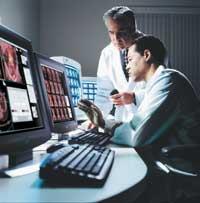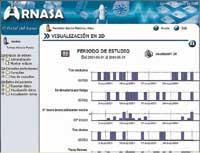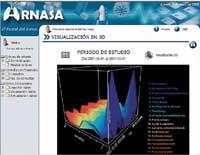e-Asma: collaboration project between doctors and computer scientists

Given the impact of preventive treatments on improving the population's health level, health systems need the Internet and technology to address demographic changes and health challenges at a controlled cost. To make decisions more and more direct, it is necessary to manage knowledge, and for this, the necessary research, development and innovation tasks are strategic.
In the 1970s, health began to use information and communications technologies to address their needs. The main solution approaches are three. First, telemedicine for the continuous monitoring of patients, especially the population living away from health centers, in order to improve the quality of service and reduce costs. Second, Decision Making
Support Systems (EHLS) are very appropriate for interactive collection of interpretations and recommendations on problems with large amounts of data. Third, bioinformatics allows the classification and analysis of biological data. For the development of these approaches and the resolution of the problems that arise in them have been applied all the methods and technologies available: communication, image treatment, use of devices, knowledge management, etc. long lasting that tell us the complexity of the solutions.
Always linked to information technology and medicine, the Decision Team of the Computer Science Faculty of San Sebastian works on research, development and innovation (R&D+i) to delve into the first two approaches. A telemedicine system is now being built to help treat asthma by using EHLS. To deal with the complexity of these systems in an industrial way, the software development process is being defined and is being built to support the other AMLT for project management.

One of the participants in the e-Asma Project, the Basque Health Innovation and Research Foundation, will design a process guide for the treatment of asthma and evaluate solutions. For its part, the Computer Networks Group of the Faculty of Computing will undertake the work of R+D+i for the design of a hardware platform of high performance, production, availability and security.
Asthma, the problem of many
Asthma, chronic respiratory disease, affects 10% of the world's population. Consequently, as in the case of other chronic diseases, the continuous improvement of the quality of care requires systematizing treatment, according to several doctors.
Currently, the follow-up of this disease is carried out through the usual processes, that is, each patient is controlled by specialists in the health network. In the traditional follow-up process, the patient writes the evolution of asthma symptoms in papers provided by the doctor and then presents the specialist with the evolution data of his problem. The latter analyzes the patient's situation and undergoes treatment.
In many hospitals, the history of patient data is already found in databases through a computerized medical record, and where this is not so, it is considered essential to have this infrastructure. This infrastructure facilitates the development and implementation of specific EHLS such as e-Asma.
Researchers from the Faculty of Computer Science of San Sebastian, through the web, make available to patients and doctors at any time all data and reports of patients through a Decision Support System. Of course, they will establish strict safety measures so that each patient's information is private and can only be consulted by doctors and authorized patients.
Main features
To contribute to the asthma problem, the e-Asma project must meet a number of
features. On the one hand, the need to use the solution over the Internet, so it must be effective for the interactive and simultaneous access of a large number of users to a large number of data and information that can help decision-making. In addition, the information will be offered 24 hours a day and seven days a week.


In addition, as use of the website increases, system services will increase. On the other hand, a comprehensive access control system has been implemented to ensure the safety of patient information.
This important information supporting decision-making is also obtained through the use and management of medical knowledge. This knowledge is mainly based on guidelines or protocols and, using a wide medical terminology, the concepts they refer to are defined by ontologies for reuse. This is essential for the collaboration of the team of expert doctors.
To achieve all these features and build a suitable platform they have had to interconnect different elements both at the hardware and software level. In order for the continuous generation of prototypes and versions of the solution system to be possible, the integration of very different elements must be carried out with methods of development and systematic reuse, as in industrial processes.
Human resources
The methods and techniques to be used in this project require that the level of training of researchers and developers be high, since medical and computer teams have years of research and experience, both here and abroad.
In addition, they have formed a spin-off company to transfer to society research and technological solutions developed at the university.
Main advantages of Internet systems
- Doctors can better follow the situation than before. Consequently, each patient can better control it.
- The patient will not have to make the same visit as before to the doctor or specialist. Also, instead of going to the hospital, you can also find help in the outpatient, as your doctors will have ease of communicating with experts.
- The Department of Health and the patient themselves will have a lower cost.
- The client can consult the data of his illness at any time with a high level of security.
- A multilingual interface will be offered to users.
- Users can view all data in an interactive, conventional or graphical way. In this case, you can see it in two or three dimensions through the zoom and turn option.
- The user will have extensive statistical studies to assess the evolution of the disease.
- As doctors will be able to visualize patient data, they will also be able to consult with each other and with patients.
- Doctors will have specific recommendations when making decisions.





